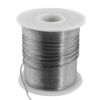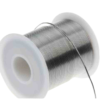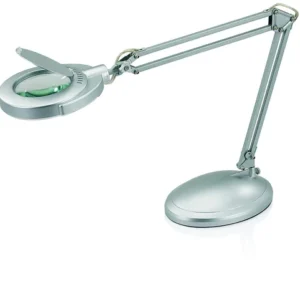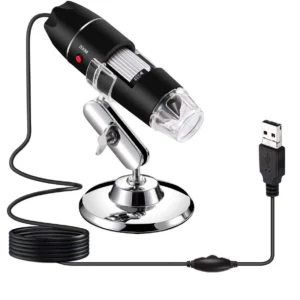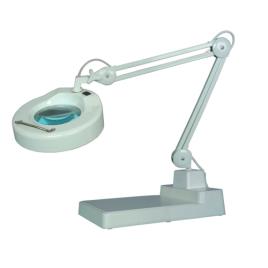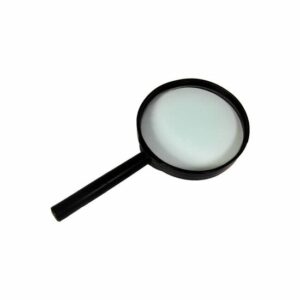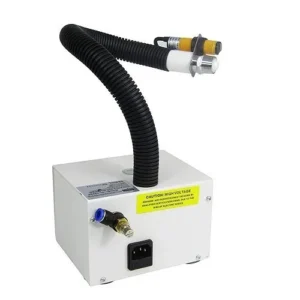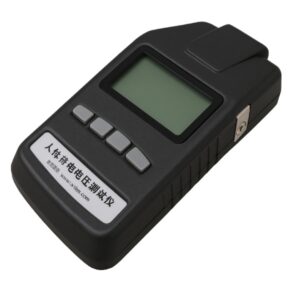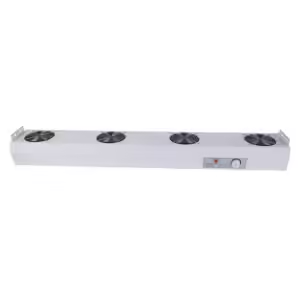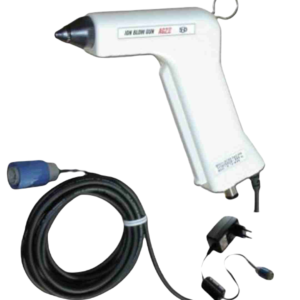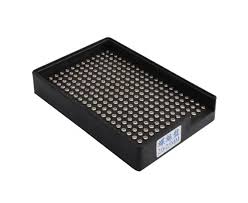Solder Wire And Stick
Supplier in Delhi | Kaasu Enterprises
Solder Wire And Stick
Product Details –
| Parameter | Solder Wire | Solder Stick |
|---|---|---|
| Product Name | Solder Wire | Solder Stick / Solder Bar |
| Material Composition | Tin-Lead (Sn-Pb), Lead-Free (Sn-Ag-Cu), Rosin Core | Tin-Lead Alloy / Lead-Free Alloy (Sn-Cu / Sn-Ag) |
| Standard Composition | 60/40 (Sn/Pb), 63/37, or Lead-Free 99.3/0.7 (Sn/Cu) | 63/37, 60/40, or 99.3/0.7 Lead-Free |
| Flux Core | Rosin Flux (1.0–3.0%) | No flux core – External flux required |
| Melting Point | 183°C – 190°C (depends on alloy) | 183°C – 230°C (depends on alloy) |
| Wire Diameter | 0.5 mm, 0.8 mm, 1.0 mm, 1.2 mm (custom options available) | NA |
| Stick Size / Shape | NA | Rectangular / Round Bar – 300 mm × 10 mm × 10 mm (typical) |
Solder Wire and Stick: Essential materials for soldering applications, providing reliable connections in electronic assemblies.
Additional Information:
Solder Wire And Stick – High-Quality Solutions for Reliable Electronic Assembly
In the world of electronics manufacturing and electrical repair, the quality of connections determines the performance and reliability of the final product. Whether assembling PCBs, wiring electronic components, or repairing metal joints, the most essential consumables in any technician’s toolkit are Solder Wire And Stick. These materials form the basis of strong, conductive, and stable soldered joints across various industrial and repair applications.
Kaasu Enterprises offers an extensive range of Solder Wire And Stick options, crafted with premium alloy compositions, ensuring superior electrical conductivity, mechanical strength, and ease of use in automated or manual soldering systems. With compositions suitable for leaded and lead-free applications, Kaasu’s soldering consumables meet the highest industry standards.
Detailed Specifications – Solder Wire and Solder Stick
| Parameter | Solder Wire | Solder Stick |
|---|---|---|
| Product Name | Solder Wire | Solder Stick / Solder Bar |
| Material Composition | Tin-Lead (Sn-Pb), Lead-Free (Sn-Ag-Cu), Rosin Core | Tin-Lead Alloy / Lead-Free Alloy (Sn-Cu / Sn-Ag) |
| Standard Composition | 60/40 (Sn/Pb), 63/37, or Lead-Free 99.3/0.7 (Sn/Cu) | 63/37, 60/40, or 99.3/0.7 Lead-Free |
| Flux Core | Rosin Flux (1.0–3.0%) | No flux core – External flux required |
| Melting Point | 183°C – 190°C (depending on alloy) | 183°C – 230°C (depending on alloy) |
| Wire Diameter | 0.5 mm, 0.8 mm, 1.0 mm, 1.2 mm (Custom diameters available) | Not Applicable |
| Stick Size / Shape | Not Applicable | Rectangular / Round Bar – 300 mm × 10 mm × 10 mm (typical size) |
Understanding the Importance of Solder Wire And Stick in Electronics
Soldering is more than just a mechanical bonding process—it’s the key to achieving electrical continuity and thermal stability in circuits. Choosing the right type of solder wire and stick plays a vital role in ensuring durability and reliability of your connections.
Kaasu Enterprises manufactures soldering materials that conform to international safety and quality standards, offering both rosin-core wires for automated and manual soldering and flux-free bars for wave soldering and dip soldering systems.
Types of Solder Offered
1. Solder Wire
Used in manual soldering irons or automated soldering machines, solder wire is ideal for fine component-level work on printed circuit boards (PCBs). Kaasu’s solder wire comes pre-fluxed with a rosin core, eliminating the need for separate flux application. Available in a variety of diameters, the wire melts quickly, flows smoothly, and provides excellent wetting to copper pads and component leads.
-
Popular compositions:
-
Sn63Pb37: Eutectic solder with sharp melting at 183°C, no pasty range.
-
Sn60Pb40: Slightly wider melting range for general-purpose soldering.
-
Lead-free alloys (SnAgCu): RoHS compliant, environmentally friendly.
-
2. Solder Stick / Solder Bar
These are solid bars without internal flux, designed for large-scale soldering processes such as wave soldering, dip soldering, or metal joining in cable assembly. The bars can be melted in solder pots and allow large volumes of connections to be formed quickly. External flux is used to ensure proper cleaning and bonding.
-
Applications:
-
Transformer winding
-
PCB solder wave machines
-
Heat sink attachment
-
Metal joint filling
-
Why Choose Kaasu’s Solder Wire And Stick?
1. High Purity Alloys
Kaasu Enterprises uses premium-grade metals that are thoroughly refined and alloyed to remove impurities, ensuring high conductivity and minimum oxidation during the soldering process.
2. RoHS and REACH Compliant
Our lead-free solder wires and sticks meet international environmental directives, making them suitable for export-grade electronics and green manufacturing requirements.
3. Smooth Flow and Clean Finish
Soldering quality isn’t just about sticking two parts together—it’s also about forming a joint that resists corrosion, handles temperature changes, and maintains electrical integrity. Kaasu solder products ensure minimal dross formation, clean fillets, and good spreadability.
4. Wide Compatibility
These solder materials can be used across a broad range of applications, including:
-
SMT rework
-
Through-hole soldering
-
Connector pin soldering
-
Audio/video electronics
-
Consumer electronics repairs
Flux Considerations – Built-In and External Options
The solder wire comes with rosin flux core in concentrations ranging from 1.0% to 3.0%. This internal flux cleans the metal surfaces and enhances wetting. For solder sticks, Kaasu recommends using external flux such as rosin-based liquid or paste fluxes to ensure oxide-free connections, especially during bulk operations.
Applications of Solder Wire And Stick in Industrial & Commercial Fields
| Application | Usage Area |
|---|---|
| PCB Assembly | Component lead soldering, jumper connections |
| LED Manufacturing | Thermal connection and contact soldering |
| Electrical Appliances Repair | Motor winding, cable rejoining |
| Automotive Electronics | Soldering modules, fuse box wiring |
| Aerospace and Defense Equipment | Circuit reliability under thermal stress |
| Consumer Electronics | Mobile, laptop, audio device repair |
Tips for Proper Soldering with Wire and Stick
-
Always keep the soldering tip clean for better heat transfer.
-
Use flux when working with solder sticks to prevent oxidation.
-
Choose the correct alloy depending on the application (lead-free for RoHS compliance).
-
Avoid excessive solder which can cause shorts or cold joints.
-
Maintain optimal soldering temperature: around 350°C for leaded, 370°C–400°C for lead-free.
Storage and Handling
To maintain solder wire and stick in peak condition:
-
Store in cool, dry conditions away from moisture.
-
Seal unused rolls or bars in airtight containers.
-
Avoid direct contact with bare hands to prevent contamination.
-
Check for oxidation or white powder (flux leak) before use.
Conclusion
The choice of Solder Wire And Stick can significantly influence the outcome of your electronics manufacturing or repair work. Kaasu Enterprises offers premium quality, performance-tested soldering materials suitable for everything from intricate PCB assembly to heavy-duty wave soldering applications.
Whether you’re a production unit, repair technician, or electronics hobbyist, Kaasu’s wide range of solder wires and bars ensures a reliable bond, low rework rates, and a long-lasting electrical connection.




